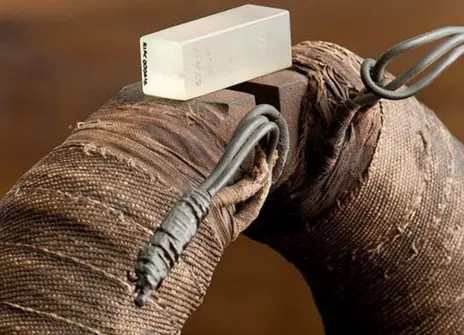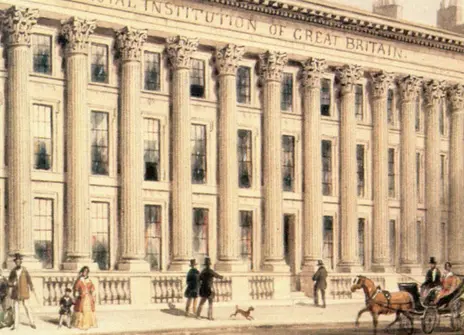Date: 1851
Place made: Basement laboratory of the Ri
Alternative name: Lines of Force, field theory, paramagnetic
Materials: Paper, iron filings, wax
Description
These small ‘drawings’, pasted into a laboratory notebook in 1851, are some of Michael Faraday’s original iron filings experiments and represent his theory of lines of force.
The pole of a magnet is attracted to the opposite pole of another magnet, north to south and south to north. Magnetic lines of force from the north and south poles pull together and join.
You cannot see the magnetic force around a magnet, but you can see the effects of its presence when an iron nail sticks to a magnet. In 1851, Faraday experimented to prove the existence of lines of force. He demonstrated their existence by coating sheets of paper with a thin layer of melted wax. He then placed these sheets of paper on top of bar magnets and gently poured tiny powder like pieces of iron (iron filings) over the top. The iron filings are were attracted to the magnetic forces around each magnet, revealing their existence and showing that the strength of the magnetic forces was concentrated around and between the poles at the end of the magnets. Faraday completed his experiment by gently heating the waxed paper to set the iron filings on the page enabling him to keep his results for further study.
Where can I view this?
This item is currently held in our archives and can be viewed by appointment.





